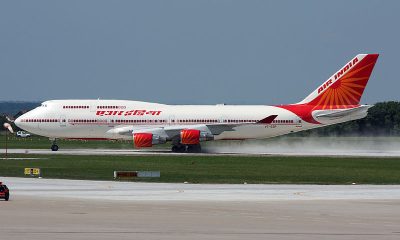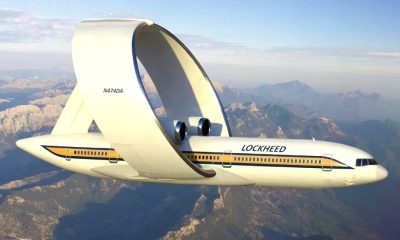Aviation
Japan’s first passenger jet makes maiden test flight
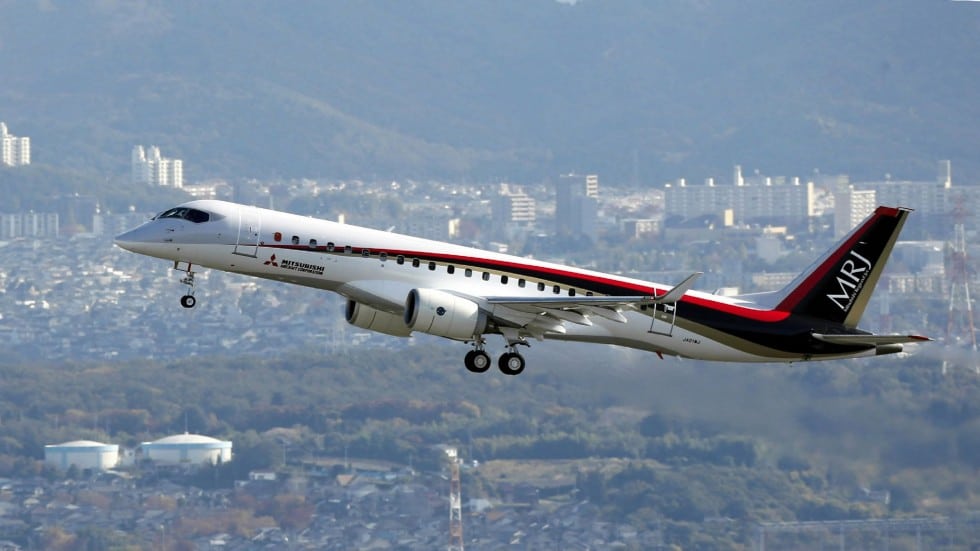
Nagoya, November 11, 2015 –
Mitsubishi Aircraft Corporation and Mitsubishi Heavy Industries, Ltd. (MHI) today conducted the first flight of the first flight test aircraft for the MRJ (Mitsubishi Regional Jet), their next-generation regional jet.
The MRJ took off from Nagoya Airport and confirmed its basic characteristics and functionality in ascent, descent and turning in airspace off the Pacific coast during its 1.5-hour first flight.
“The MRJ successfully took to the sky today thanks to ongoing cooperation and support from all members involved,” said Hiromichi Morimoto, President, Mitsubishi Aircraft Corporation. “We will make our utmost efforts towards type certificate acquisition, committing all our resources to develop and produce the finest regional jet aircraft to enter commercial service in 2017.”
“Operational performance of the MRJ was far better than expected. We had a significantly comfortable flight,” said Pilot Yasumura, who served as captain.
Mitsubishi Aircraft and MHI will continue to conduct flight tests for the first delivery scheduled for the second quarter of 2017. The flight tests in the US are scheduled to start in the second quarter of 2016, from the MRJ base at Grant County International Airport at Moses Lake in Washington State.
Going forward, Mitsubishi Aircraft and MHI continue to devote their collective resources towards the successful completion of the MRJ project.The unit of Mitsubishi Heavy Industries, which built the World War Two-era Zero fighter, is hoping the $47-million regional jet will help it oust Canada’s Bombardier Inc as the world’s second-biggest maker of smaller passenger jets behind Brazil’s Embraer SA.
The MRJ is Japan’s first commercial passenger aircraft since the 64-seat YS-11 entered service 50 years ago. The first MRJ is slated for delivery in June 2017 to Japan’s biggest carrier, ANA Holdings. Mitsubishi aims eventually to sell more than 2,000 aircraft in the competitive market segment. Mitsubishi says the MRJ burns a fifth less fuel than aircraft of similar size, thanks to new-generation engines from Pratt & Whitney, a subsidiary of United Technologies Corp.
Japan’s last attempt to establish itself as a commercial aircraft maker ended in failure. Production of the YS-11, built by a consortium that included Mitsubishi Heavy, finished after only 182 planes were built.
That program however helped Mitsubishi Heavy and other companies forge ties with Boeing Co, turning them into major suppliers and partners of the U.S. aircraft maker and helping revive an aerospace industry that was dismantled after World War Two.
Features :
Clean Sheet Innovation born from freedom , A clean sheet can be liberating. No preexisting platforms to conform to. No parts bins to raid. The results are the most efficient, comfortable and reliable 70- and 90-seat jets to ever take flight.
Clean sheet advantages
- Highest fuel efficiency
- Lowest environmental impact
- Most passenger comfort
- Designed to increase reliability
Engine
MRJ is proud to be the launch customer for Pratt & Whitney’s PurePower® Geared Turbofan™ engine which was optimized specifically for the MRJ. The new gear system allows the fan, low pressure compressor and turbine to rotate at optimum speeds which enables engine to have game-changing fuel efficiency. In addition, its Geared Turbofan™ engine architecture requires 60% fewer turbine airfoils than conventional turbofan engines and reduces maintenance time and cost.
A new view on the horizon . The most advanced, full fly-by-wire, flight deck available today is right at home aboard the MRJ. Featuring the Pro Line Fusion® system, the latest in avionics technology from Rockwell Collins, the MRJ’s flight deck maximizes situational awareness with four 15-inch landscape LCDs that deliver unprecedented clarity and information. The modern and stylish cabin of the MRJ introduces new values in the interior comfort of regional jet aircraft. Passengers will be very comfortable as the MRJ will provide wide cabin space, comfortable slim seats, large overhead bins, and lavatory for passengers with reduced mobility.
MRJ90 versions
class at 31″ pitch)Cargo Compartmentm3 (ft3)18.2 (644)Engine PurePower®
PW1217G EngineEngine ThrustkN (lbf)78.2 (17,600) x 2Maximum Takeoff Weightkg (lb)39,600 (87,303)40,995 (90,378)42,800 (94,358)Maximum Landing Weightkg (lb)38,000 (83,776)38,000 (83,776)38,000 (83,776)Maximum Zero Fuel Weightkg (lb)36,150 (79,697)36,150 (79,697)36,150 (79,697)Range @ 88PAX x 102kg (225lb)km (nm)2,120 (1,150)2,870 (1,550)3,770 (2,040)Maximum Operating Mach NumberNewest Flight Deck
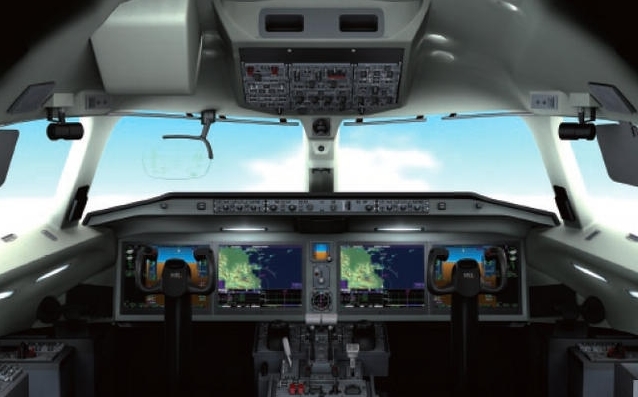
Cabin
Pratt & Whitney
M 0.78M 0.78M 0.78Maximum Operating Altitudem (ft)11,900 (39,000)11,900 (39,000)11,900 (39,000)Takeoff Field Length (MTOW, SL, ISA)m (ft)1,490 (4,890)1,600 (5,250)1,740 (5,710)Landing Field Length (MLW, Dry)m (ft)1,480 (4,860)1,480 (4,860)1,480 (4,860)
So far it has secured 223 firm orders, most recently in January when Japan Airlines asked for 32 planes. The biggest single purchase, for 100 aircraft, was from U.S. regional airline operator Trans State Holdings. Those Japanese companies build 35 percent of Boeing’s advanced 787 carbon-composite jetliner, including the wings, the most complex part. Japan’s biggest carmaker, Toyota Motor Corp, and largest trading company, Mitsubishi Corp, each own a 10 percent stake in the MRJ venture.
Liked it ..!?
Share with your friends and family

Airlines
US DOT says Airlines must now pay automatic refunds for cancelled flights
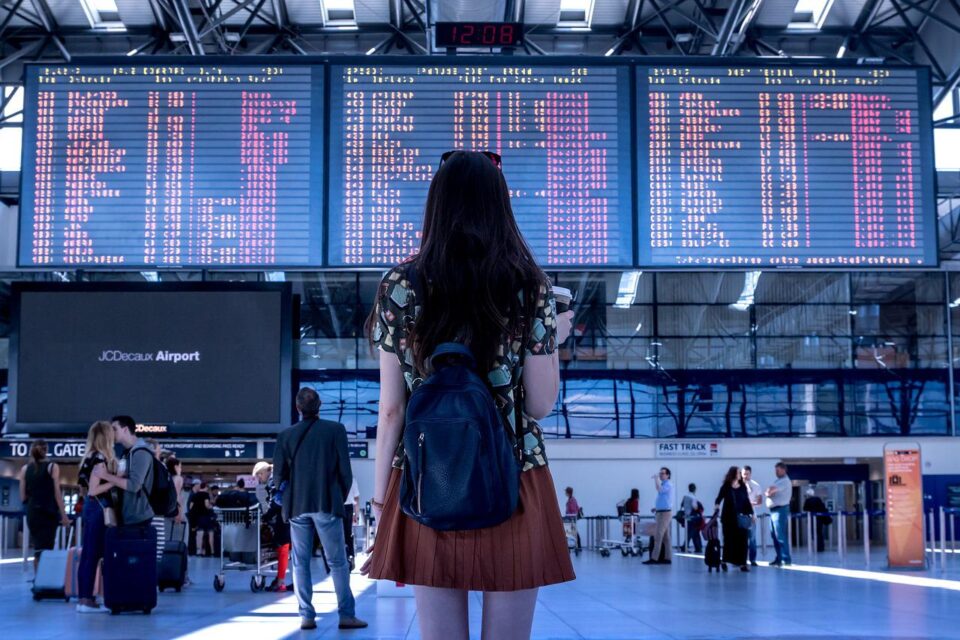
The U.S. Department of Transportation (DOT) has released a final regulation requiring airlines to quickly reimburse passengers with automatic cash refunds when owed, according to a statement made by the Biden-Harris Administration.
Under the new regulation, passengers will find it easier to get refunds when airlines dramatically alter or cancel flights, cause severe delays for checked baggage, or don’t supply the additional services they paid for.
According to a statement from the Biden-Harris Administration, the U.S. Department of Transportation (DOT) has published a final rule mandating airlines to promptly compensate customers with automatic cash refunds when they are eligible. The new rule would make it simpler for customers to receive refunds from airlines in cases when they drastically change or cancel flights, cause significant delays for checked luggage, or fail to provide the extra services they charged for.
Under the latest rule from the USDOT, passengers are guaranteed refunds in several scenarios:
- Canceled or Significantly Changed Flights: Passengers are entitled to refunds if their flight is canceled or significantly altered, including changes in departure or arrival times exceeding 3 hours domestically or 6 hours internationally, departures or arrivals from different airports, increased connections, downgrades in service class, or changes less accommodating to passengers with disabilities.
- Delayed Baggage Return: Passengers filing mishandled baggage reports can claim a refund for checked bag fees if their luggage is not returned within specific timeframes after flight arrival.
- Unprovided Extra Services: If airlines fail to deliver paid extra services like Wi-Fi, seat selection, or inflight entertainment, passengers can request refunds for those fees.
The final rule streamlines the refund process, ensuring it is:
- Automatic: Refunds are issued automatically without requiring passengers to request them.
- Prompt: Airlines must refund credit card purchases within seven business days and other payment methods within 20 calendar days.
- In Original Form of Payment: Refunds are provided in the original payment method used for purchase.
- Full Amount: Passengers receive full refunds minus the value of any portion of transportation already used, including government and airline fees.
Suggest banning family seating junk fees and ensuring that parents can travel with their kids at no additional cost. No airline promised to ensure fee-free family seating prior to efforts from President Biden and Secretary Buttigieg last year. Family seating is now guaranteed free of charge on four airlines, and the Department is working on a plan to eliminate family seating junk fees.
Propose to make passenger compensation and amenities mandatory so that travelers are taken care of when airlines cause flight delays or cancellations.
Airlines
The Nine Freedoms of the Air – Jetline Marvel
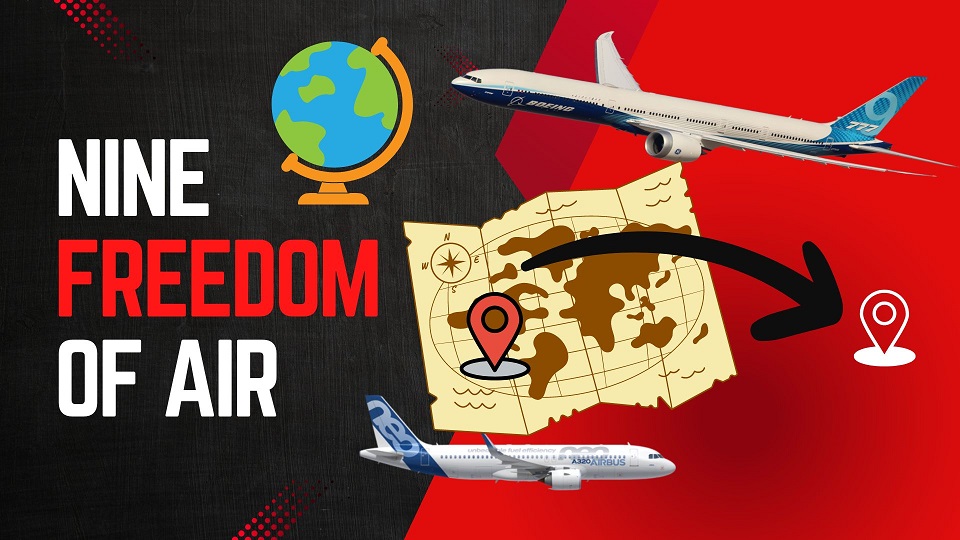
Most of us travel from one city to another city via road we need to get permission to that specific city if it is in another country like a visa or Road access permission to use its property for revenue purposes to carry passengers and Cargo. Similarly, In the airline Industry, it is also important that the Company have permission to fly and access that country whether it’s for stoppage flying above them, or Operating the passengers within that country This is called Freedom of the Air.
Some countries together they agree with certain conditions to access their Aerospace for to access for the airline to travel above their nation. If the bilateral is done for Their own countries’ airlines or other countries’ airlines. In this chapter, we understand how this thing is carried out. What all the condition has to look into that.
The Freedoms of the Air are international commercial aviation agreements (traffic rights) that grant a country’s airline(s) the privilege to enter and land in another country’s airspace. They were formulated in 1944 at an international gathering held in Chicago (known as the Chicago Convention) to establish uniformity in world air commerce. There are generally considered to be nine freedoms of the air.
Most nations of the world exchange first and second freedoms through the International Air Services Transit Agreement. The other freedoms,chase freedom airline miles when available, are usually established between countries in bilateral or multilateral air services agreements. The third and fourth freedoms are always granted together. The eighth and ninth freedoms (cabotage) have been exchanged only in limited instances
First Freedom:
The basic permission granted to an airline from one country (A) to fly through the airspace of another country (B)
Second Freedom:
The permission for a commercial airplane from country (A) to land and refuel (often called a technical stop) in another country (B).
Third Freedom :
The privilege for an airline to transport paying (Revenue) passengers from its home country (A) to another country (B).
Fourth Freedom
The rights for an airline to transport paying (Revenue )passengers from another country (B) to the airline’s home country (A).
Fifth Freedom
Fifth Freedom (also known as beyond rights): The rights for an airline to transport passengers from its home country (A) to a destination (B), then pick up and carry passengers to other international destinations (C).
Sixth Freedom:
Sixth Freedom (Combination of Third & Fourth Freedoms) The right for an airline to carry passengers or cargo between two foreign countries (B and C), provided the aircraft touches down in the airline’s home country (A).
Seventh Freedom:
The authorization for an airline to operate flights that start in a foreign country (B), skip its home country (A), and transport passengers to another international destination (C).
Eighth Freedom Air
The rights for an airline to transport passengers from one location within a country’s territory (B) to another point within the same country on a flight originating in the airline’s home country (A). This right is commonly referred to as cabotage and is notably scarce outside of Europe.
Ninth Freedom Air
The entitlement for an airline from a specific country (A) to begin a flight in a foreign country (B) and transport passengers from one location to another within that foreign country. This concept, also referred to as stand-alone cabotage, distinguishes itself from the traditional aviation definition of cabotage by not directly involving the airline’s home country.
Aviation
Air India’s B747 Makes Its Final Journey, Waving Farewell to Fans
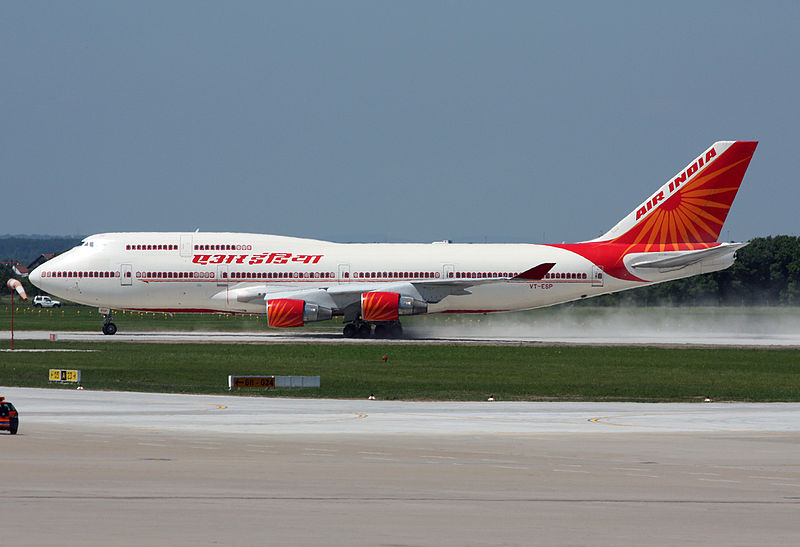
In a poignant moment marking the end of an era in aviation history, Air India’s iconic Boeing 747 aircraft, affectionately known as the ‘Queen of the Skies,’ embarked on its ultimate journey from Mumbai’s international airport.
The departure, bound for Plainfield, USA, where it will undergo dismantling and part-stripping under the ownership of American AerSale, signals the closure of a storied chapter for the airline.
Once revered for transporting dignitaries ranging from prime ministers to presidents, the Boeing 747 has etched itself into aviation lore. Yet, as airlines worldwide pivot towards more contemporary and cost-effective aircraft, Air India’s decision to bid farewell to its remaining Boeing 747s reflects the pragmatic realities of today’s aviation landscape.
The sale of these majestic planes to AerSale represents a strategic move by Tata Group, Air India’s new custodian, towards optimizing operational efficiency and embracing modern industry standards. Out of the four aircraft sold, two will be repurposed into freighters, while the remaining pair will be meticulously disassembled to salvage valuable components.
The final flight from Mumbai witnessed a touching tribute as pilots performed a traditional ‘Wing Wave,’ symbolizing the conclusion of the Boeing 747‘s distinguished service with Air India. This poignant gesture encapsulates the deep sentiment attached to the aircraft’s departure and its significant contribution to the airline’s legacy.
As the Boeing 747 embarks on its journey to Plainfield, USA, nostalgia permeates the air, evoking memories of its maiden flight on March 22, 1971. Over five decades, Air India operated a total of 25 Boeing 747s, each leaving an indelible mark on the annals of aviation history.




























